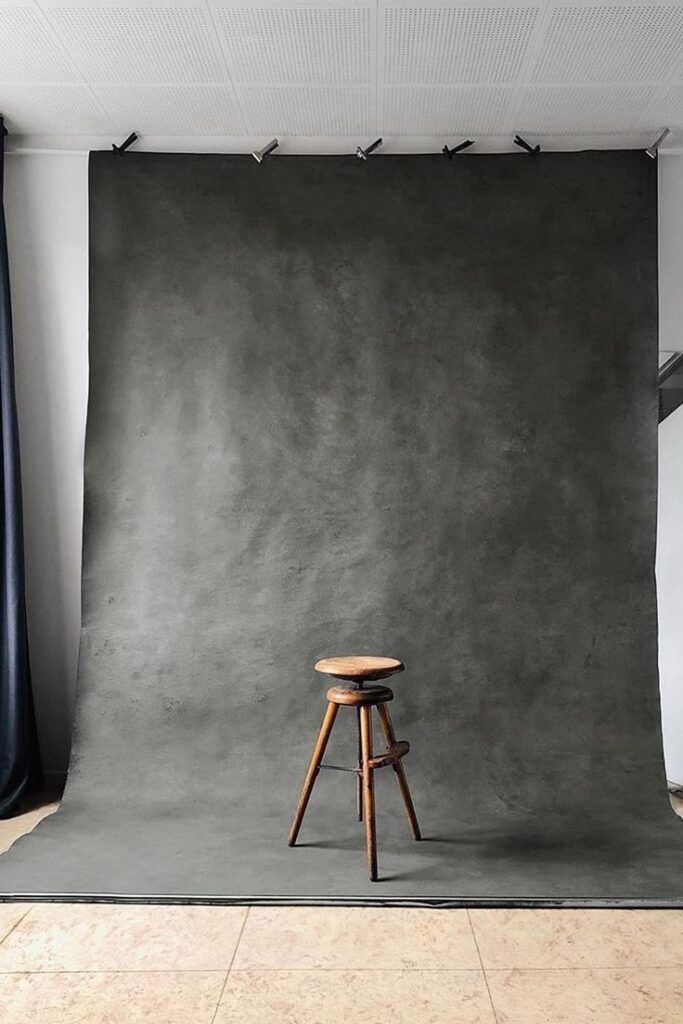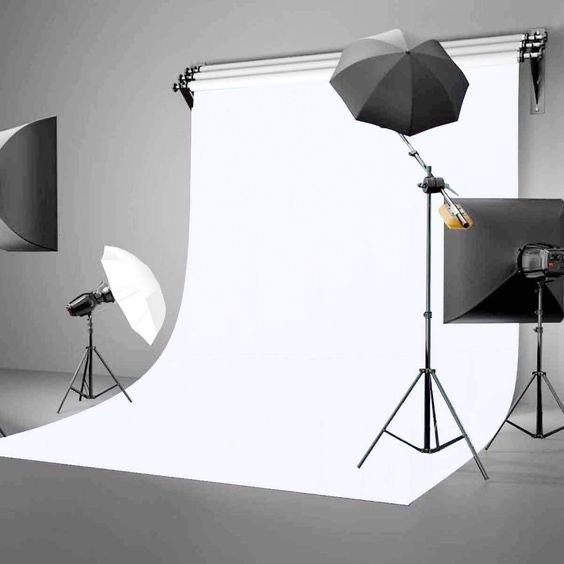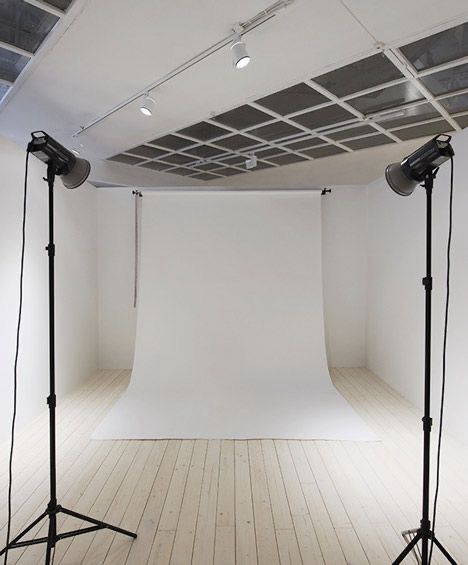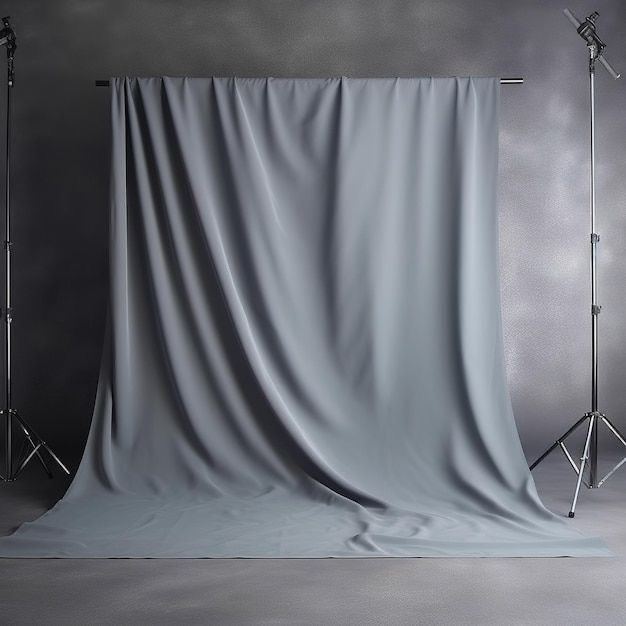Photography backdrops are cloths or panels used as a background scenery in photographs. They come in a wide variety of colors, patterns and textures to suit different photography needs. Common backdrop materials include muslin, canvas, vinyl and photography paper. Muslin is a very popular and affordable option that provides a soft, uniform color. Canvas gives a burlap-like texture while vinyl backdrops are durable and water resistant. Photography paper is a thick, photo-quality material often used for headshots and portraits.



Photographers use backdrops for many types of photography like portraits, product shots, events and more. They help aesthetically frame the subject and provide an atmosphere or theme. Solid color backdrops work well for clean, simple studio shots. Patterned backdrops add visual interest without distracting from the primary subject. Photographers may choose seasonally-themed backdrops like fall leaves or holiday prints. Self-standing backdrops secure easily and allow quick set up and tear down. Weights or sandbags are sometimes needed to prevent lightweight backdrops from blowing over outdoors. Photography backdrops come in a range of sizes to suit various studio and location setups.
Photography Backdrop Materials

There are several materials commonly used for photography backdrops. The best material depends on the intended use and photographer’s budget. Muslin is an inexpensive, lightweight cotton or polyester fabric that is often used for basic photography backdrops. It provides a soft, smooth backdrop that doesn’t distort colors or reflections. However, muslin wrinkles and isn’t very durable. Canvas photo backdrops have a textured, burlap-like appearance that adds visual interest. While canvas holds its shape better than muslin, it is heavier and more expensive.
Vinyl photo backdrops are water-resistant, wrinkle-resistant, and very durable, making them a good choice for location shoots outdoors. However, they reflect more light and don’t breathe as well as fabric backdrops. Photographic paper makes for high-quality, professional-looking backdrop material but is more expensive. It provides sharp images without color shifting. Other materials like velvet or silk can provide unique textures but are most suitable for high-end studio work. The backing quality, portability, and intended shoot conditions all factor into choosing the right backdrop material. Less expensive materials like muslin are suitable for basic home photography.
What kind of backdrop is best for photography?
There are a few key factors to keep in mind when choosing the best photography backdrops for your project. The intended use, setting, and subject matter should all inform the selection. For portraits and headshots, soft, plain materials like muslin create a clean, professional look. Photo paper can provide especially sharp details. For products and close-up work, darker solids or subtle patterns help distinguish the subject from the background. Larger prints or textures work well too.
Which background color is most attractive?
Neutral colors like white, grey, or beige are popular choices for portrait backgrounds, as they help focus attention on the subject without distraction.
Outdoor location shoots necessitate durable, wrinkle-resistant materials like canvas or vinyl that can withstand weather. Event photography often calls for versatile backdrops that roll or fold up easily. Videos and commercial work may demand seamless, distraction-free backgrounds. Colorful or themed backdrops can set a fun, whimsical tone for families, weddings or events. Neutral tones like black, white or gray offer versatile options that blend with many subject matter. Ultimately, selecting a high-quality backdrop made of thick, smooth material appropriate to the environment provides the best backdrop for most photography needs.
Here are some of the most popular types of muslin backdrops for portraits and headshots
- White – A pure white muslin backdrop is the most classic and versatile option. It works well for all skin tones and hair colors.
- Off-white/ecru – A very light tan or beige color provides warmth and dimension over stark white while still maintaining a clean, professional look.
- Gray – Light to medium gray colors are popular alternatives to white. They can be especially flattering for black and brown skin tones.
- Black – While not as common as white, black backdrops make for bold, high-contrast portraits that stand out. Hair and eyes really pop against the dark backdrop.
- Neutral tones – Other muted solid colors like tan, light blue, pale pink and gray-greens can complement a variety of subjects without overpowering them.
- Subtle textures – Very faint textures like linen, canvas or sand add visual interest without being distracting for portraits. More prominent patterns are better suited to full-body shots.
- Photo walls – interchangeable panels with multiple color options allow photographers flexibility for different portrait styles as needed.
considerations when choosing between a white or off-white muslin backdrop
- Skin tone – White can wash out fair or pale skin, while off-white provides more flattering dimension and contrast. Darker skin tones often photograph better on white.
- Hair color – Dark hair may blend into an off-white backdrop more than white. Light hair stands out well against either.
- Lighting – A white backdrop benefits from brighter lighting to avoid subjects being lost in shadow. Off-white works well even in softened light.
- Mood – Pure white conveys a cleaner, more crisp studio aesthetic. Off-white has a warmer, softer feeling that some prefer.
- Versatility – White is more universally flattering and suitable for a wider variety of subjects over multiple photo sessions.
- Wrinkles – Off-white tends to show wrinkles and texture slightly less than bright white under harsh lighting.
- Cost – White muslin is often the most economical, while shades of off-white may cost slightly more.
How do I choose a backdrop?




There are several factors to consider when selecting a backdrop for your photography needs. First, think about what type of photos you will be shooting – portraits, products, events, etc. This will help narrow the choices. Backdrops for headshots are different than those for full-body shots or landscapes. Next, consider the backdrop’s intended environment. Muslin works well in-studio but may not hold up outdoors. Vinyl holds its shape regardless of weather.
The size needed depends on your space and framing preferences. Make sure to choose a backdrop wide and tall enough for your purposes. Also consider the backdrop’s color and texture. White is versatile but patterns or tones may be more suitable sometimes. Neutrals often work better than bright hues. Material, print quality, weight and portability matter too. Canvas is sturdier than muslin. Photo papers create gallery-style images. Take your budget into account as well. Inexpensive muslin suits basic needs. For professional results, quality materials are worth the investment. Choosing the right backdrop goes a long way in achieving your creative vision.
factors to consider when choosing a backdrop for outdoor photography



- Durability – Outdoor backdrops need to withstand weather like wind, rain and sun. Materials like vinyl and heavy-duty canvas hold up best. Fabric backdrops may need protections.
- Wrinkle-resistance – The backdrop material should maintain its shape even when set up outside. PVC/vinyl and thicker materials won’t crease easily.
- Weight – Heavier backdrops are necessary to avoid blowing over in wind. Look for options with grommets for anchoring or sandbags.
- Fold size – For on-the-go use, choose a backdrop that packs down small but fully extends for full size shots.
- Colorfastness – Dye stability is important to prevent fading from sun exposure over time.
- Reflectivity – Matte or low-gloss finishes avoid glare that can occur outside.
- UV protection – A UV-resistant coating on the material preserves photo quality in direct sunlight.
- Temperature tolerance – The backdrop should withstand hot/cold outdoor conditions without damage.
How do I choose a backdrop color?
There are several factors to consider when selecting the optimal backdrop color for your photos. The subject matter and mood are important. Bright colors may be distracting for portraits but work well for products. Neutrals like black, white and gray offer versatility across many sessions. You’ll also want to think about lighting. Light colors reflect more light while darker tones absorb it. In bright conditions, lighter backdrops preventsubjects from being lost in shadows. Skin tones, hair color and eye color should also inform your decision.
What is the best background color for all skin tones?
Black and white backdrops are good for models with different skin tones, features, hair color, and eye color. They are more diverse and can even help your headshots to look sharper and more defined.
Fair skin pairs better with light backdrops whereas dark skin pops against darker colors. Backdrops in the complementary color range of your subject are especially flattering. Consider if colors need to remain uniform across multiple images too. Simple solid shades allow mixing and matching. Subtle textures add interest without clashing with other tones. Test different options and review images to gauge how backdrop colors impact the look, feel and story of your photos. With some experimentation, you can find the perfect shades to suit your vision.
Photography Backdrop Size Guide
The optimal backdrop size depends on the type of photography and available space. For basic portraits and headshots, a 10×10 or 10×12 foot backdrop works well in most home studios. It provides enough background without taking up too much room. Larger 12×16 and 12×20 sizes accommodate more full-body poses or group shots. When shooting products, a 5×7 or 8×10 backdrop leaves space around items without crowding the frame. Outdoor landscape photography requires even bigger backdrops, often 16×20 feet or greater to properly frame wide environmental shots.
Event and wedding photography necessitates portable, lightweight options that roll or fold up small but extend to 10×15 feet or more. Be sure to measure the height of your backdrop supports as well, as most backdrops require at least 10 feet of clearance. Choosing a backdrop with grommets allows joining multiple panels together for composite scenes. In general, larger sizes offer more versatility for composing shots at different angles and distances.
Affordable portable backdrop options
- Fovitec Photo Backdrops – These come in a carrying bag and feature 10×10, 10×20, and 12×18 foot sizes starting around $50. They wrinkle less than muslin.
- Neewer Photo Studio Backdrops – Available in 5×7, 8×10, and 10×13 feet, these roll up and have carrying bags for around $30. Durable PVC material.
- LIUMIU Portable Photography Backdrop – A portable photo studio kit with background, stands, and lights for $100. Comes with 10×12, 10×20, and 10×30 backgrounds.
- Loveless Backdrops – Cotton muslin backdrops from $25-50 that fold up small. Sizes from 5×7 to 12×20 feet. D-rings for hanging.
- Photogenic Backdrops – Affordable polyester backgrounds from $15-30 that wrinkle less than muslin. Many sizes and colors.
- Fovitec Muslin Backdrops – Inexpensive 100% cotton options for $20-30. Sizes 5×7 to 12×20 feet. Thick material resists wrinkles.
- Savage Universal Photo Studio – $70 kit with 10×12 muslin backdrop, two stands, bags, and lighting accessories.
Food Photography Backdrops
When shooting food photos, the backdrop plays an important role in making dishes look their most appetizing. Solid color backdrops are versatile, with white being the standard for highlighting details. Off-white, light gray or pale blue also accentuate food well. Darker tones like navy or forest green help define plate contours and draw the eye toward the subject. Textured backdrops add visual interest without distraction. Burlap, linen or light wood grains work well.
Materials like muslin drape nicely without creasing. Seamless paper produces clean images resembling styles seen in magazines. For quick lifestyle shots in a kitchen, marble or slate tile backdrops complement many dishes. Outdoors, greenery, flowers and neutral surfaces mimic nature’s plates. No matter the backdrop, even lighting is key. For professional results, backdrop selection should flatter the food’s natural colors while supporting the style and mood you envision.
Related Post: 15 props for food photography
Popular backdrop types used in food photography
- Colored acrylic/Plexiglas sheets – Available in a variety of solid hues, they provide an even, reflective surface to photograph on.
- Patterned vinyl backdrops – Repeating designs like polka dots, checks or florals provide visual interest without detracting from the food.
- Butcher paper – Its neutral tan tone enhances most foods and the paper is inexpensive/disposable.
- Bamboo backdrops – The natural material and varied textures like caning complement many Asian-inspired dishes.
- Black/dark backdrops – Help dishes featuring light-colored ingredients like pasta or light-colored plates really stand out.
- Metallic backdrops – Silver, rose gold and gold reflect light attractively and suit luxurious food portraits.
- Studio paper backgrounds – Seamless rolls mimic the streamlined look of professional food magazine shoots.
- Tabletops/surfaces – Granite, wood, marble – real surfaces photograph food in a studio environment.
- Background patterns – Subtle repeats like thin pinstripes or polka dots add dimension without cluttering the scene.
DIY Photography Backdrops
Creating your own backdrops is an affordable way to have custom options for your photos. Muslin drop cloths or sheets in neutral colors make inexpensive backdrops. Sew grommets along the top for hanging. For textured backgrounds, consider canvas drop cloths, bed sheets, or gift wrapping paper. You can also dye plain muslin or canvas yourself. Paint large pieces of material, let fully dry, then seal with clear finish. Old blankets, curtains or upholstery make unique backgrounds too. For seamless backgrounds on the floor, use rolls of craft paper, shelf liner, or contact paper.
Outdoors, use natural materials like trees, flower beds, barns or draped fabrics. Digital prints on photo paper give gallery borders. Lightly tape edges to rollers before use. Coordinate colors to subjects for flattering portraits. Experiment with layering backgrounds for depth. With materials around the house and a little creativity, you can produce one-of-a-kind DIY backdrops suited perfectly to your style.
What is the difference between background and backdrop?
While often used interchangeably, there is a subtle difference between a background and a backdrop in photography. A background refers to anything appearing behind the main subject in an image that helps provide context and environment. This could be the natural scenery or structures when taking photos outdoors. In studio shots, it encompasses the entire space behind the subject, like walls and other fixtures. A backdrop, on the other hand, specifically means a detachable panel or screen placed behind a subject for a photographic session.
Backdrops are purposefully introduced to the scene as removable, changeable backgrounds. They are available in different colors, patterns and textures. The main subject is foregrounded against an artificial backdrop brought into the frame, rather than relying on the existing background scenery. So in summary – a background includes anything appearing in the background, while a backdrop refers to a supplementary portable panel added for photography purposes.
Photography Backdrops Stands
Backdrop stands are essential equipment for using backdrops in photography. They allow you to safely and easily hang backdrops in the desired position. Photo backdrop stands typically consist of two poles joined at the top by a crossbar. They come in a variety of heights from 6-12 feet to accommodate different spaces. Look for sturdy stands that can hold the weight of heavy backdrops without wobbling. Many feature sandbags or spikes on the feet to prevent slipping.
Some include useful extras like backdrop bags or clamps. When setting up stands, be sure the crossbar is level between each pair. Place stands far enough apart to fully support the backdrop without sagging in the middle. Properly secured stands ensure your backdrops remain taut and wrinkle-free throughout photo shoots. Having the right stands makes backdrop use fast, convenient and safe.
Sturdy And Reliable Backdrop Stands
- Manfrotto – A leading photography equipment brand known for heavy-duty stands. Their stands can support up to 200 lbs.
- Savage – Offers a wide range of height-adjustable stands and kits at affordable prices. Rated to hold 165 lbs.
- ESDi – Durable aluminum stands starting at 6.5 feet. Can hold 300+ lbs with push-button leg locks.
- Neewer – Inexpensive yet sturdy alternatives. Some doubles as light stands and hold up to 110 lbs.
- Design Bono – Well-built backdrop stands with velcro crossbars and sandbags. Rated for 220 lbs.
- Interfit – Modular design allows configuring widths. Holds 165 lbs with anti-slip spikes.
- Photek – Professional-grade stands made of reinforced steel. Height ranges up to 12 feet.
- Westcott – Quality USA-made stands rated for 250+ lbs. Options for all budgets.
- Glow Studios – Reliable stands that fold flat for storage and transport. Holds 200 lbs.

